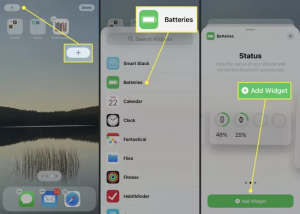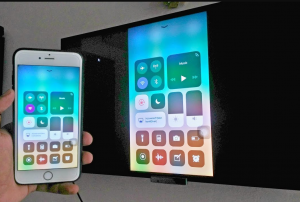We rely heavily on our smartphones to stay connected, productive and entertained. It’s frustrating when our trusty iPhones encounter issues, and one of the most common and irritating problems is when your iPhone gets stuck on the iconic Apple logo during startup.
You’re not alone if you’ve ever experienced this issue but fear not! Its flagship product, the iPhone, has revolutionized the way we communicate, work, and play. However, even the most advanced devices are not immune to occasional glitches and malfunctions. One of the most common and frustrating issues faced by iPhone users is the device becoming seemingly frozen on the iconic Apple logo during startup. This vexing problem can interrupt your daily routine and leave you feeling helpless. Here, we discussed the causes, potential solutions, and preventive measures to tackle the predicament of an “iPhone Stuck on the Apple Logo.” Let’s go on a journey to understand and resolve this perplexing issue, ensuring your iPhone continues to be the reliable companion you’ve come to rely on.
When your iPhone remains stuck on the Apple logo, it means that the device is unable to complete its boot up process. This can occur due to a variety of reasons, and it’s essential to diagnose the specific cause to apply the most effective solution.
Software Glitches:
Here, we inform you about some glitches of software. Keep Reading!
IOS Updates:
Sometimes a failed or interrupted iOS update can disrupt the normal boot sequence.
App Conflicts:
Incompatible or malfunctioning apps can interfere with the startup process.
Hardware Problems:
There are a lot of problems that can disturb the hardware and create the problem in devices.
Battery Issues:
A malfunctioning or drained battery might prevent the iPhone from booting up.
Physical Damage:
Dropping your iPhone or exposing it to liquid can result in hardware damage, affecting its performance.
Jailbreaking:
Modifying your iPhone’s operating system through jailbreaking can lead to unexpected issues, including startup problems.
Corrupted Data:
Files or data corruption within your iPhone can hinder the boot up process.
Now that we’ve identified potential culprits, let’s move on to the solutions.
Force Restart Your iPhone:
A force restart is often the quickest solution when your iPhone is stuck on the Apple logo. The procedure varies slightly depending on your iPhone model.
For iPhone 8 and newer models:
Quickly press and release the Volume Up button.
Quickly press and release the Volume Down button.
Press and hold the Side or Power button until you see the Apple logo.
For iPhone 7 and 7 Plus:
Press and hold both the Volume Down and Sleep Wake Top buttons simultaneously until you see the Apple logo.
For iPhone 6s and Earlier Models:
Press and hold both the Home and Sleep/Wake (Top) buttons simultaneously until you see the Apple logo.
Connect to iTunes:
If the force restart doesn’t resolve the issue, connect your iPhone to a computer with iTunes installed.
Launch iTunes on your computer.
Connect your iPhone using a USB cable.
When prompted, select Restore to reinstall the iOS on your device. This process will erase your data, so make sure you have a backup.
DFU Mode Restore:
If the previous steps fail, you can try a Device Firmware Update (DFU) mode restore, which is more comprehensive.
Connect your iPhone to your computer.
Open iTunes.
Force restart your iPhone as per the instructions for your specific model.
Release the Sleep Wake button while still holding the Volume Down button until iTunes recognizes your iPhone in recovery mode.
Follow the on-screen instructions to restore your iPhone.
Seek Professional Help:
If none of the above steps resolve the issue, it’s time to consult with an Apple certified technician or visit an Apple Store. You may be dealing with a hardware problem that requires professional attention.
Preventative Measures:
Prevention is always better than cure. Here are some tips to reduce the risk of your iPhone getting stuck on the Apple logo in the future.
Regular Backups:
Ensure you regularly back up your iPhone data to iCloud or your computer to safeguard against data loss during troubleshooting.
Keep Software Updated:
Always update your IOS and apps to the latest versions to minimize software-related issues.
Avoid Jail breaking:
Refrain from jail breaking your iPhone as it can introduce instability.
Handle Your iPhone Carefully:
Protect your iPhone from physical damage by using a sturdy case and being cautious with handling.
Restore your New iPhone or iPad with a Computer:
Our smartphones and tablets have become an integral part of our lives. Among the most coveted and widely used devices are iPhones and iPads, known for their sleek design and cutting edge features. However, even the best of technology can face issues, leaving you wondering how to restore your new iPhone or iPad with a computer.
Introduction to Restoring Your Device:
At some point in your digital journey, you might encounter situations where your new iPhone or iPad starts acting up. It could be due to software glitches, an unsuccessful update or even a forgotten passcode. In such cases, restoring your device can be a savior.
Why Would You Need to Restore?
Before we search, the step-by-step guide on restoring your iPhone or iPad let’s understand why you might need to take this route.
Software Glitches:
Sometimes your device might freeze, crash or show unusual behavior due to software glitches. Restoring your device can help resolve these issues.
Failed Updates:
Occasionally, iOS updates may fail, leaving your device stuck in a loop. Restoring can bring your device back to its operational state.
Forgotten Passcode:
If you still need to remember your device’s passcode, you might be locked out. Restoring can help you regain access.
Data Transfer:
When you’re switching to a new device, restoring from a backup on your computer can seamlessly transfer your data.
Steps to Restore Your iPhone or iPad:
Restoring your device with a computer can be a straightforward process if you follow these steps carefully.
Backup Your Data:
Before you proceed with any restoration, it’s crucial to back up your data. This step ensures that your photos, contacts, messages, and other valuable information are safe. You can back up your iPhone or iPad through iTunes or iCloud.
Connect Your Device:
Connect your iPhone or iPad to your computer using a USB cable. Ensure that you have the latest version of iTunes or Finder for macOS Catalina and later installed.
Launch iTunes or Finder:
Once your device is connected, launch iTunes on macOS Catalina and earlier or Finder on macOS Catalina and later. Your device should appear in the interface.
Put Your Device into Recovery Mode
To initiate the restoration process, you’ll need to put your device into recovery mode. The steps for this may vary depending on your device model. Refer to Apple’s official website for detailed instructions specific to your iPhone or iPad model.
Choose ‘Restore’:
In iTunes or Finder, you’ll see an option to restore. Click on it to begin the restoration process. iTunes or Finder will then download the necessary software for your device.
Wait for the Process to Complete:
Restoring your device can take some time, so be patient. Your iPhone or iPad will restart several times during the process. Once it’s complete, you’ll see the setup screen.
Set Up Your Device:
Follow the on-screen instructions to set up your device as new or restore it from a backup. If you’ve backed up your data, select the option to restore from your backup to regain all your apps and data.
Restore Your Data:
If you backed up your data before restoring, iTunes or Finder will prompt you to restore from a backup. Choose the most recent backup and your device will be populated with your apps photos and more.
Conclusion:
Encountering the dreaded iPhone Stuck on the Apple Logo issue can be frustrating, but it’s not insurmountable. By following the troubleshooting steps outlined in this guide and adopting preventative measures, you can ensure that your iPhone continues to serve you reliably.





